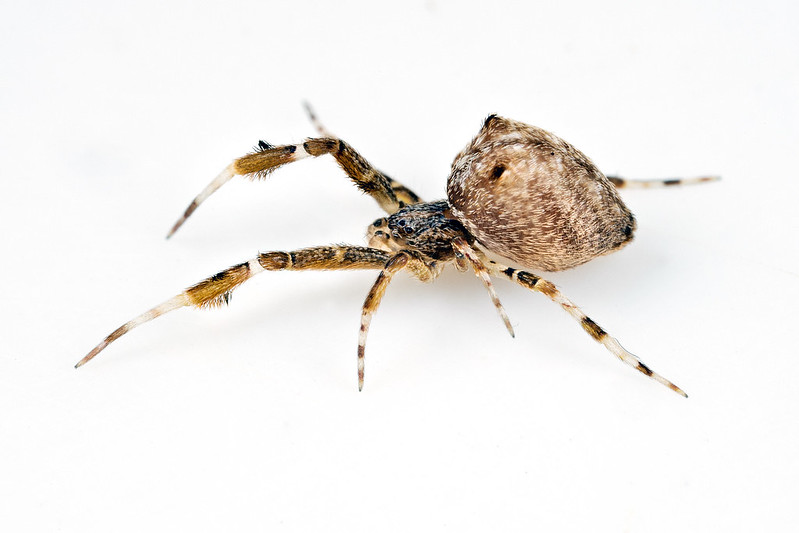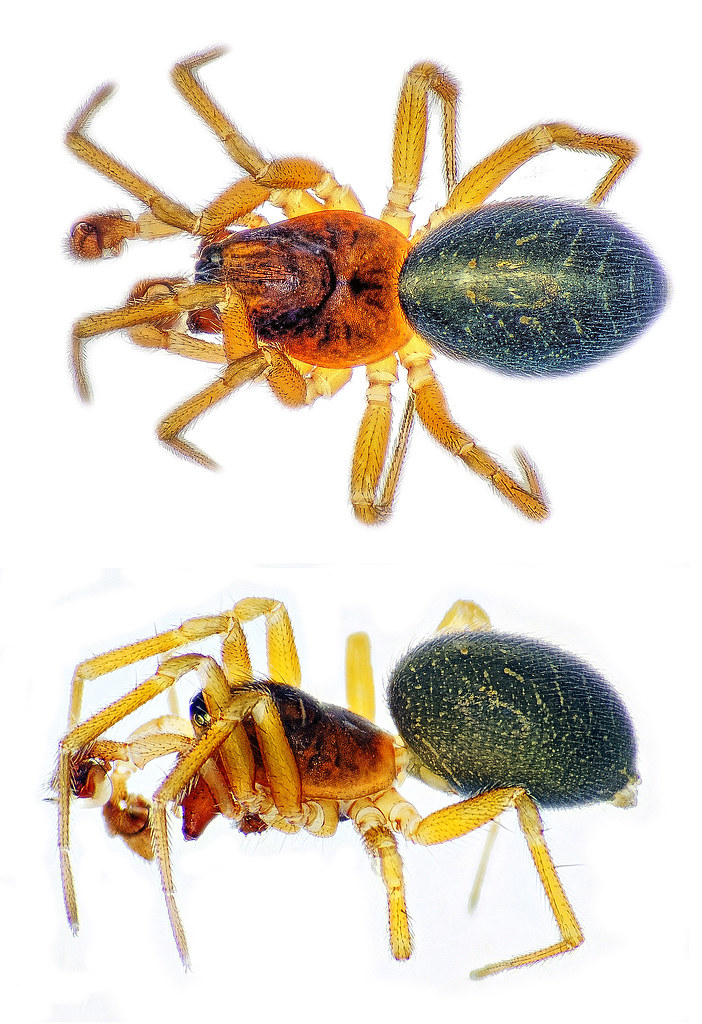 Uloborus plumipes
Uloborus plumipes, also known as the Feather-legged Spider (derived from the Latin
pluma "feather" and
pes "foot"), or Garden Centre Spider, is a European species now widely distributed in greenhouses and garden centres worldwide. Believed to have been imported from The Netherlands on plants and first recorded in the UK in the 1990's, this species survives in greenhouses and buildings where the winter temperature is maintained above freezing. In this habitat it appears to play an effective role in controlling whitefly, but they are not commonly found in domestic houses. Although it is now widely distributed across the UK, they are cryptic and difficult to spot as they hang upside down motionlessly in their webs. Their horizontal webs and star-shaped egg sacs are much easier to find than the spiders themselves. Females grow up to 6mm and appear to vastly outnumber males, but this may be because the 4mm males are even more cryptic than the females. This species lacks venom glands and traps prey by entanglement in fuzzy, non-sticky cribellate silk.
The Garden Centre Spider was first recorded in VC55 (Leicestershire and Rutland) in 2001, ironically in a garden centre only half a mile from my home. It was subsequently recorded at Brooksby Agricultural College in Melton Mowbray, once more in a now-defunct Leicester garden centre, and finally in the plant section of a Homebase Superstore on 12/06/2006. The species has not been recorded in VC55 since that date, so, with half the roads and fields in the County underwater, I decided to go and do some fieldwork in warm garden centres. The logical place to start was the original location near my home. The only problem with that plan was that this garden centre no longer exists, having been replaced by a housing estate. However, before redevelopment, the owners moved the garden centre business to a new location in the County, so that's where I headed.
It took me approximately three and a half minutes to find the first one, naturally enough, an adult female. Webs were very much in evidence, and after a bit of search, I also managed to find a juvenile. Home again within the hour. One of the good things about being an Arachnologist is that it allows me to predict the future: if the weather stays this wet, more garden centre visits are in store :-)

















